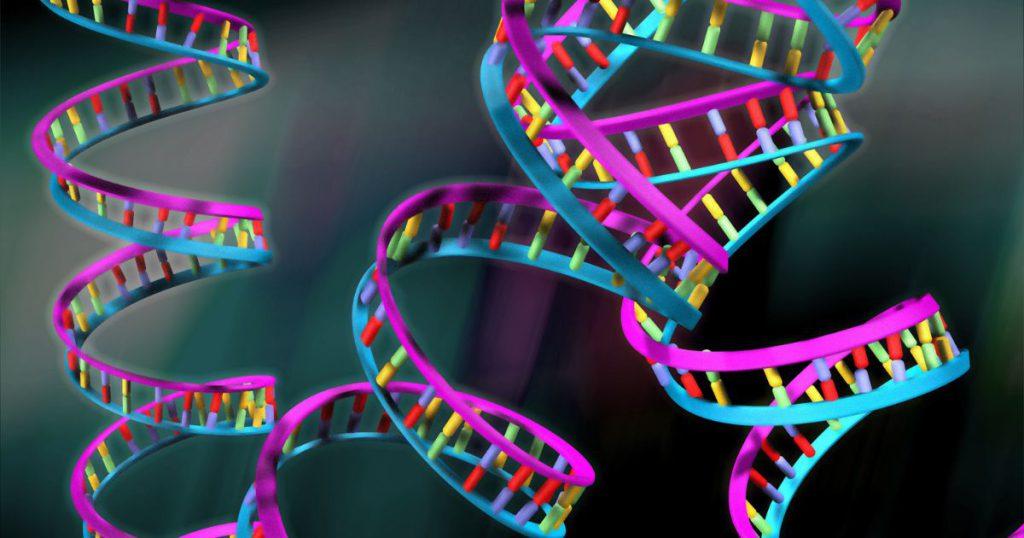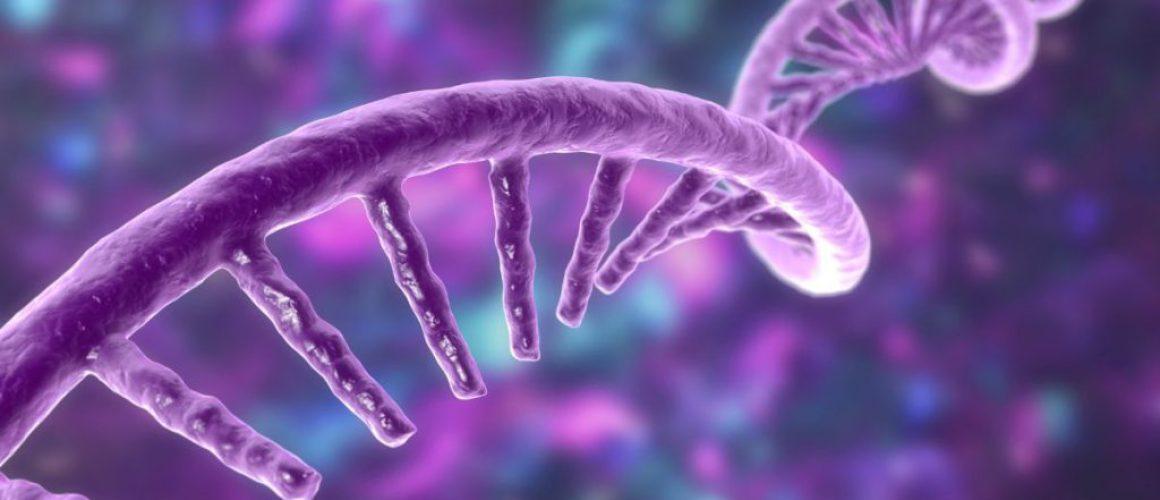The Blueprint of Life: Exploring DNA and RNA in Molecular Biology
Table of Contents
Key Summary Table: DNA and RNA in Molecular Biology
| Feature | DNA | RNA |
|---|---|---|
| Structure | Double-stranded | Usually single-stranded |
| Sugar | Deoxyribose | Ribose |
| Bases | Adenine, Guanine, Cytosine, Thymine | Adenine, Guanine, Cytosine, Uracil |
| Function | Stores genetic information | Transfers genetic information for protein synthesis |
Diving into the world of DNA and RNA in Molecular Biology is like exploring the secret codes of life itself. Join me, Sean Schepers, as we unravel these fascinating blueprints, promising a journey as thrilling as a rollercoaster ride through your own cells!
If our DNA is the book of life, then RNA is the reader who interprets it.

Introduction
In the intricate world of molecular biology, DNA and RNA serve as the blueprint of life, encoding the instructions that guide our biological processes. These two types of nucleic acids are the cornerstone of life as we know it, dictating everything from our physical traits to our susceptibility to certain diseases. But what exactly are DNA and RNA, and how do they function in molecular biology? Let’s dive into the fascinating world of these biological macromolecules.
Understanding Molecular Biology
Before we delve into the specifics of DNA and RNA in Molecular Biology, let’s take a moment to understand the fascinating field of molecular biology. At its core, molecular biology is the study of life at a molecular level. It focuses on the structure and function of the molecules (like DNA and RNA) that are essential to life. These molecules interact in complex ways to create cells, the basic building blocks of all living organisms. Understanding these interactions is key to unraveling the mysteries of life itself.
Molecular biology is a vast field, encompassing everything from genetics to biochemistry. It’s a discipline that’s constantly evolving, with new discoveries and technologies continually pushing the boundaries of our knowledge. But at the heart of it all are DNA and RNA, the molecules that carry the genetic instructions for life.
The understanding of DNA and RNA has revolutionized the field of medical technology. I recall a lecture where we discussed the advent of personalized medicine, which is largely based on an individual’s unique genetic makeup. This approach to treatment would not be possible without our understanding of DNA and RNA. It’s fascinating to see how these molecular structures have transformed the way we diagnose and treat diseases, moving us towards more personalized and effective treatments.
DNA: The Blueprint of Life
DNA, or deoxyribonucleic acid, is often referred to as the blueprint of life, but what does that really mean? Essentially, DNA is a long molecule that contains our unique genetic code. Like a blueprint, it holds the instructions for building all the components of our bodies. This information is stored as a code made up of four chemical bases: adenine (A), guanine (G), cytosine (C), and thymine (T). The order, or sequence, of these bases determines the information available for building and maintaining an organism, similar to the way in which letters of the alphabet appear in a certain order to form words and sentences.
Key Functions of DNA
- Stores genetic information.
- Controls the production of proteins.
- Allows for self-replication during cell division.
- Undergoes mutations for evolutionary changes.
But how does DNA carry out its role in molecular biology? The answer lies in its structure. DNA is made up of two strands that twist around each other to form a double helix. Each strand has a backbone made of alternating sugar (deoxyribose) and phosphate groups. Attached to each sugar is one of the four bases. The two strands are held together by bonds between the bases; adenine forms a bond with thymine, and cytosine forms a bond with guanine.
Table: Components of a DNA Nucleotide
| Component | Description |
|---|---|
| Deoxyribose | The sugar component of DNA. It forms the backbone of the DNA molecule along with phosphate. |
| Phosphate Group | Along with deoxyribose, it forms the backbone of the DNA molecule. |
| Nitrogenous Base | One of four bases: Adenine, Guanine, Cytosine, or Thymine. The sequence of these bases encodes genetic information. |

RNA: The Messenger of the Cell
While DNA holds the instructions, it’s RNA, or ribonucleic acid, that carries out the orders, playing a crucial role in protein synthesis. But what is the role of RNA in molecular biology? Unlike DNA, which is located in the cell’s nucleus, RNA can be found throughout the cell. It acts as a messenger, carrying instructions from the DNA to control the synthesis of proteins.
RNA is similar to DNA in many ways. It’s made up of a long chain of nucleotides, each comprising a sugar (ribose), a phosphate group, and one of four bases: adenine, guanine, cytosine, and uracil (U). However, unlike DNA, RNA is usually single-stranded and contains the sugar ribose instead of deoxyribose. RNA also replaces the base thymine with uracil.
Key Functions of RNA
- Transfers genetic information from the nucleus to the cytoplasm.
- Translates genetic information into proteins.
- Regulates gene expression.
- Involved in various cellular processes such as splicing and editing.
There are several types of RNA, each with a different function. Messenger RNA (mRNA) carries the genetic information copied from DNA in the form of a series of three-base code words, each of which specifies a particular amino acid. Transfer RNA (tRNA) is the key to deciphering the code words in mRNA. Each type of tRNA molecule links a specific amino acid to a specific three-base sequence in the mRNA. The ribosome is a complex of proteins and ribosomal RNAs (rRNAs) that translates the code in the mRNA into a chain of amino acids.
Types of RNA and Their Functions
| Type of RNA | Function |
|---|---|
| Messenger RNA (mRNA) | Carries genetic information from DNA to the ribosome |
| Transfer RNA (tRNA) | Transfers specific amino acids to the ribosome to be added to the protein being synthesized |
| Ribosomal RNA (rRNA) | Forms part of the ribosomes, the sites of protein sy |

The Differences Between DNA and RNA
Though DNA and RNA work hand in hand, they are not identical twins; understanding their differences is key to grasping their roles in molecular biology. So, what is the difference between DNA and RNA in molecular biology? As we’ve already discussed, one of the main differences lies in their structure. DNA is double-stranded, forming a double helix, while RNA is usually single-stranded. The sugar in the backbone of DNA is deoxyribose, while in RNA, it’s ribose.
Another key difference is the bases they contain. Both DNA and RNA contain adenine, guanine, and cytosine. However, DNA contains thymine, while RNA contains uracil instead. This difference is crucial for the function of these molecules. Thymine in DNA pairs with adenine, while in RNA, uracil pairs with adenine.
Finally, DNA and RNA play different roles in cells. DNA is the keeper of the genetic code. It stays in the nucleus of the cell and passes its information onto RNA. RNA, on the other hand, is the messenger that carries this information to the rest of the cell where it can be used to produce proteins.
Differences Between DNA and RNA
| Feature | DNA | RNA |
|---|---|---|
| Structure | Double-stranded | Single-stranded |
| Sugar | Deoxyribose | Ribose |
| Bases | Adenine, Guanine, Cytosine, Thymine | Adenine, Guanine, Cytosine, Uracil |

The Similarities Between DNA and RNA
Despite their differences, DNA and RNA share some fundamental similarities that underline their interconnected roles in the cell. So, how are DNA and RNA molecules the same? Both DNA and RNA are nucleic acids, one of the four major types of macromolecules essential for all known forms of life. They are both made up of nucleotides, which consist of a sugar, a phosphate group, and a nitrogenous base.
Both DNA and RNA play crucial roles in genetics. DNA contains the genetic blueprint for the biological development and functioning of an organism, while RNA carries the genetic information necessary for the synthesis of proteins. In this way, DNA and RNA work together to ensure the proper functioning of cells.
The Structure and Components of DNA and RNA
Now that we’ve explored the roles and characteristics of DNA and RNA, let’s delve into their structures and the components that make up these vital molecules. What is the molecular biology structure of DNA and RNA? And what are the components of the DNA and RNA molecules?
DNA is made up of two strands that twist around each other to form a double helix. Each strand is made up of a series of nucleotides. Each nucleotide consists of a sugar (deoxyribose), a phosphate group, and one of four bases: adenine, guanine, cytosine, or thymine. The two strands are held together by hydrogen bonds between the bases, with adenine pairing with thymine and guanine pairing with cytosine.
RNA, on the other hand, is usually single-stranded. Like DNA, it’s made up of a series of nucleotides, each consisting of a sugar (ribose), a phosphate group, and one of four bases: adenine, guanine, cytosine, or uracil. In RNA, adenine pairs with uracil.
Looking towards the future, I believe the role of DNA and RNA in Molecular Biology will continue to expand and evolve. With advancements in technologies like CRISPR for gene editing and mRNA vaccines, we’re just scratching the surface of what’s possible. However, with these advancements come challenges. Ethical considerations, accessibility of treatments, and our limited understanding of the long-term effects of these technologies are just a few of the issues we’ll need to navigate. But I’m optimistic. I believe that with careful research and thoughtful discussion, we can harness the power of DNA and RNA to improve health outcomes and push the boundaries of what’s possible in medical technology.
DNA is like a computer program but far, far more advanced than any software ever created.”

Conclusion
From the blueprint to the messenger, DNA and RNA are the dynamic duo at the heart of molecular biology, driving the processes that keep life ticking. Understanding their structure, components, and roles in the cell is key to understanding life itself. Whether you’re a student of molecular biology or just curious about the world around you, I hope this exploration of DNA and RNA has been enlightening
This post is part of the Molecular Biology category and belongs to the series Molecular Biology: A Comprehensive Guide for Medical Technology
Also have a look at my other posts: DNA vs RNA: Understanding Their Roles and Differences in Molecular Biology and The Symphony of the Cell: Cell Signaling in Molecular Biology
Disclaimer: This article is intended for informational purposes only. It is not a substitute for professional advice or help and should not be relied on to make decisions of any kind. Any action you take upon the information presented in this article is strictly at your own risk and responsibility!
Frequently Asked Questions
What is the difference between DNA and RNA in molecular biology?
The main differences between DNA and RNA lie in their structure and function. DNA is double-stranded and forms a double helix, while RNA is usually single-stranded. DNA contains the sugar deoxyribose, while RNA contains ribose. DNA contains the base thymine, while RNA contains uracil instead. Functionally, DNA stores genetic information, while RNA carries this information and is involved in protein synthesis.
What is the molecular biology structure of DNA and RNA?
DNA is made up of two strands that twist around each other to form a double helix. Each strand is made up of nucleotides, which consist of a sugar (deoxyribose), a phosphate group, and one of four bases: adenine, guanine, cytosine, or thymine. RNA, on the other hand, is usually single-stranded and is made up of nucleotides, each consisting of a sugar (ribose), a phosphate group, and one of four bases: adenine, guanine, cytosine, or uracil.
What is the role of RNA in molecular biology?
RNA plays a crucial role in protein synthesis. It acts as a messenger, carrying instructions from the DNA to the rest of the cell where it can be used to produce proteins. There are several types of RNA, each with a different function in the process of protein synthesis.
What is the meaning of DNA and RNA in biology?
DNA stands for deoxyribonucleic acid and RNA stands for ribonucleic acid. They are both types of nucleic acids, which are molecules that play crucial roles in storing and expressing genetic information.
What is the best difference between DNA and RNA?
Perhaps the most significant difference between DNA and RNA is their respective roles in the cell. DNA is responsible for storing and transferring genetic information, while RNA directly codes for amino acids and acts as a messenger between DNA and ribosomes to make proteins.
How are DNA and RNA molecules the same?
DNA and RNA are both nucleic acids, made up of nucleotides, which consist of a sugar, a phosphate group, and a nitrogenous base. They both play crucial roles in genetics, with DNA containing the genetic blueprint for the biological development and functioning of an organism, and RNA carrying the genetic information necessary for the synthesis of proteins.
What are the 5 major differences between DNA and RNA?
The five major differences between DNA and RNA are:
DNA is double-stranded, while RNA is usually single-stranded.
DNA contains the sugar deoxyribose, while RNA contains ribose.
DNA contains the base thymine, while RNA contains uracil.
DNA stays in the nucleus of the cell, while RNA can be found throughout the cell.
DNA stores genetic information, while RNA carries this information and is involved in protein synthesis.
What is the role of DNA and RNA in protein synthesis?
DNA and RNA both play crucial roles in protein synthesis. DNA contains the instructions for making proteins. This information is transcribed into mRNA, a type of RNA. The mRNA then carries this information to the ribosomes, the cell’s protein-making machinery. Here, the information in the mRNA is translated into a sequence of amino acids to form a protein.
What are the components of the DNA and RNA molecules?
DNA and RNA are made up of nucleotides. Each nucleotide consists of three components: a sugar (deoxyribose in DNA and ribose in RNA), a phosphate group, and a nitrogenous base (adenine, guanine, cytosine, thymine in DNA, and adenine, guanine, cytosine, uracil in RNA).
What are 3 similarities between DNA and RNA?
Three similarities between DNA and RNA are:
They are both nucleic acids, made up of nucleotides.
They both play crucial roles in genetics.
Both DNA and RNA contain the bases adenine, guanine, and cytosine.
Why is RNA as important as DNA?
While DNA contains the genetic blueprint for the biological development and functioning of an organism, RNA carries the genetic information necessary for the synthesis of proteins. Without RNA, the information in DNA would be useless because it wouldn’t be able to get to the rest of the cell where it can be used to produce proteins.
What is the role of RNA in DNA replication?
During DNA replication, a type of RNA called primer RNA is synthesized. This primer serves as a starting point for the DNA polymerase to begin adding nucleotides to form a new strand of DNA.
Why is RNA so important to cell differentiation?
RNA plays a crucial role in cell differentiation, which is the process by which a cell changes from one cell type to another. Different types of RNA, such as messenger RNA (mRNA) and microRNA (miRNA), are involved in regulating the expression of genes during cell differentiation. This regulation ensures that the right genes are expressed at the right time, leading to the development of different cell types.
Further Reading
From DNA to RNA – Molecular Biology of the Cell
Sean Schepers is a third-year Medical Technology student at Mahidol University with a passion for all things health and medicine. His journey into the world of medicine has led him to explore various fields. Sean's blog posts offer a unique perspective, combining his academic insights with personal experiences. When he's not studying or blogging, Sean enjoys keeping up with politics and planning his future career in medicine.
In addition to his studies, Sean serves as the chairman of the Rights, Liberties, and Welfare Committee, a role that reflects his commitment to advocacy and social justice. Beyond his academic pursuits, Sean offers tutoring services in English and Biology, further demonstrating his dedication to education and mentorship. His journey is one of continuous discovery, and he invites others to join him as he explores the dynamic and transformative world of medical technology.


